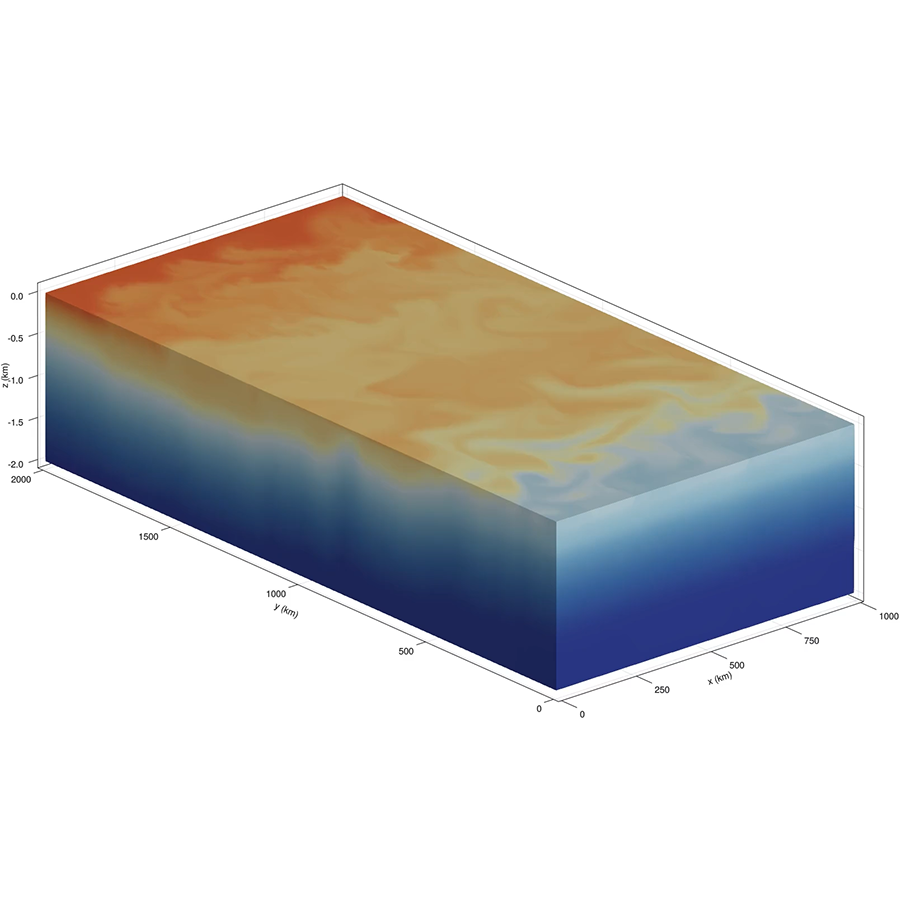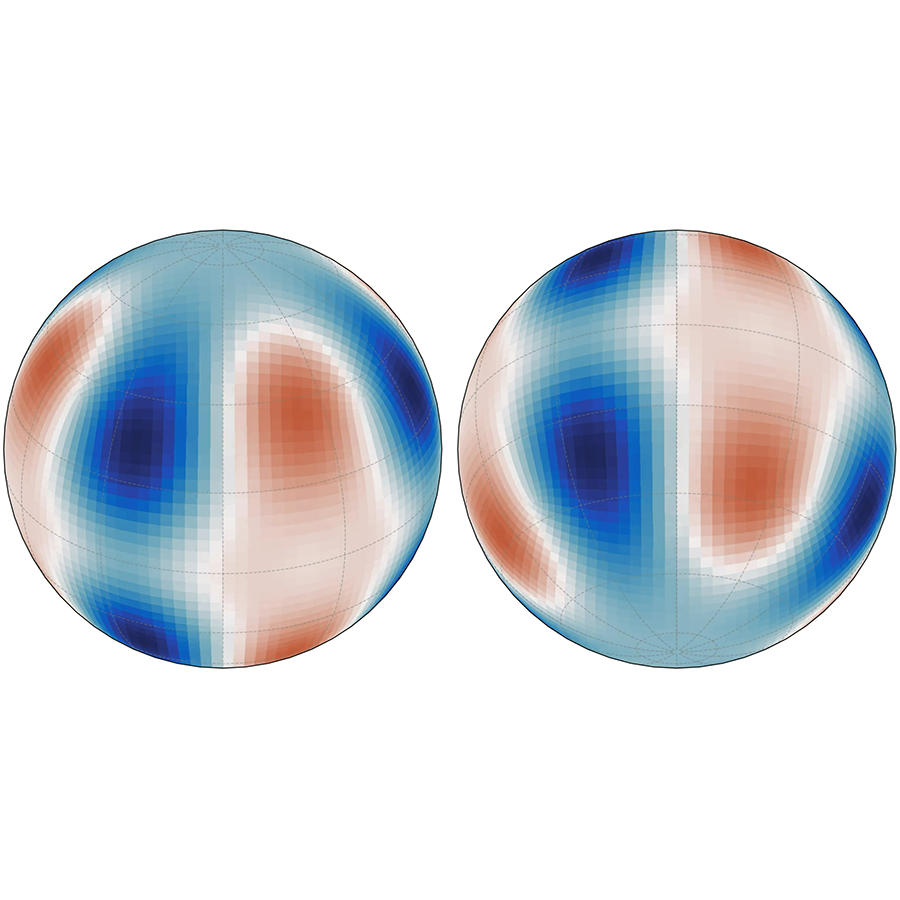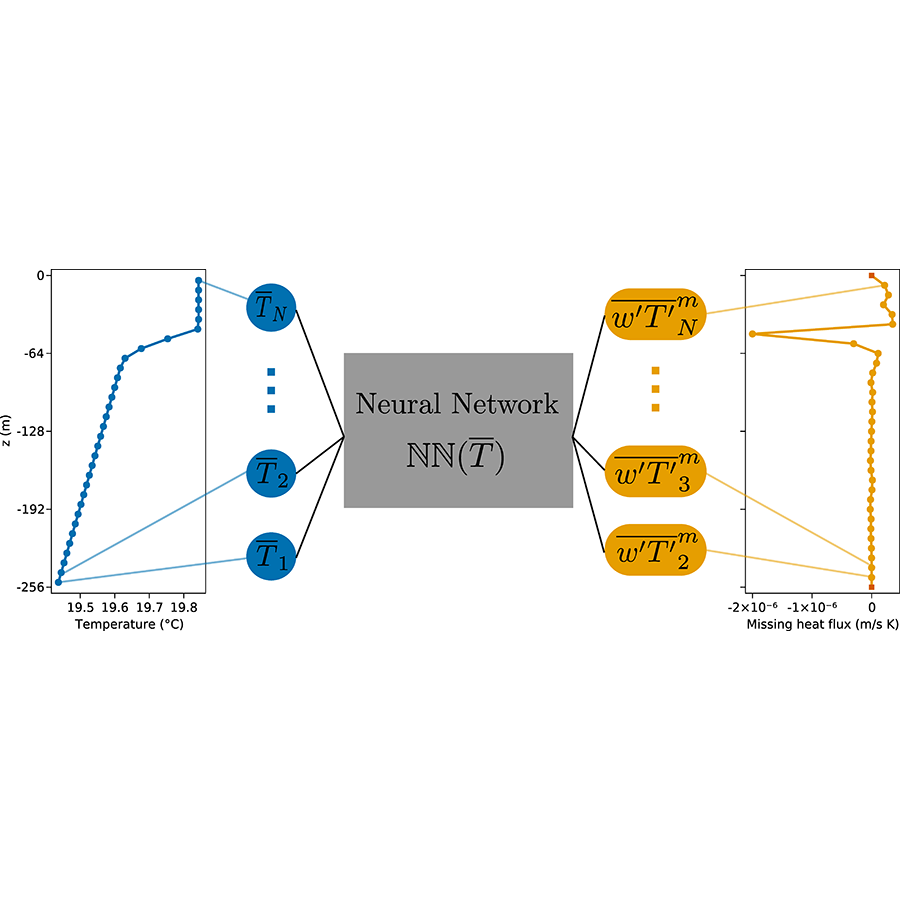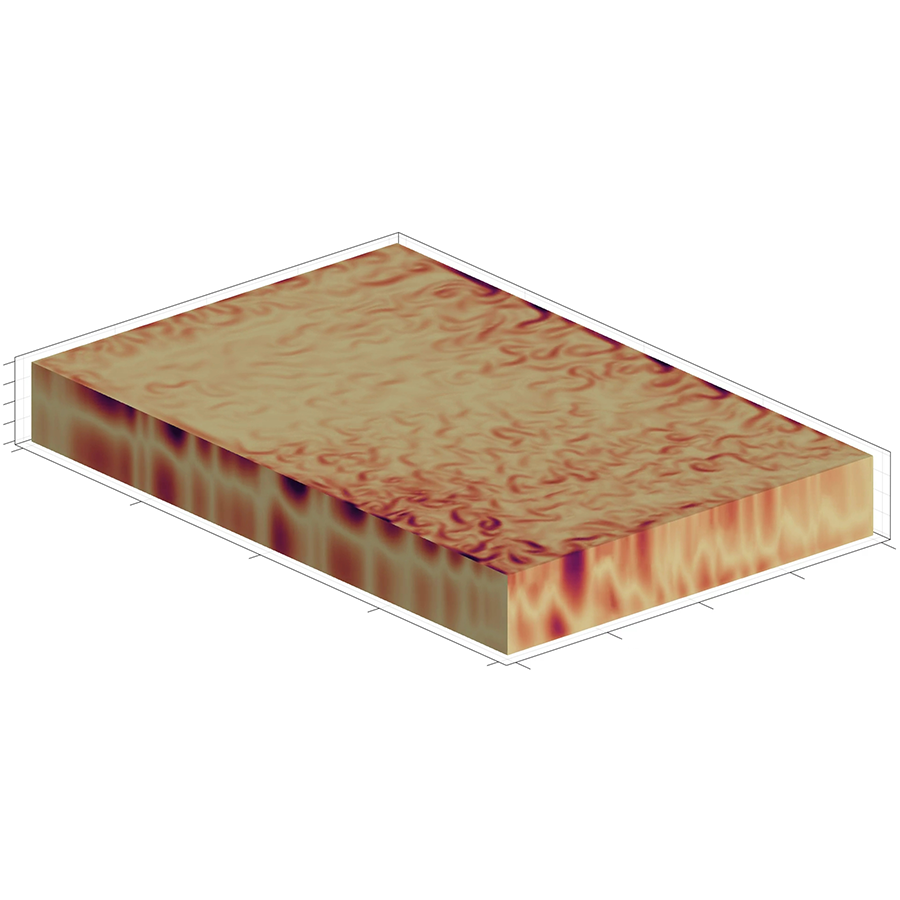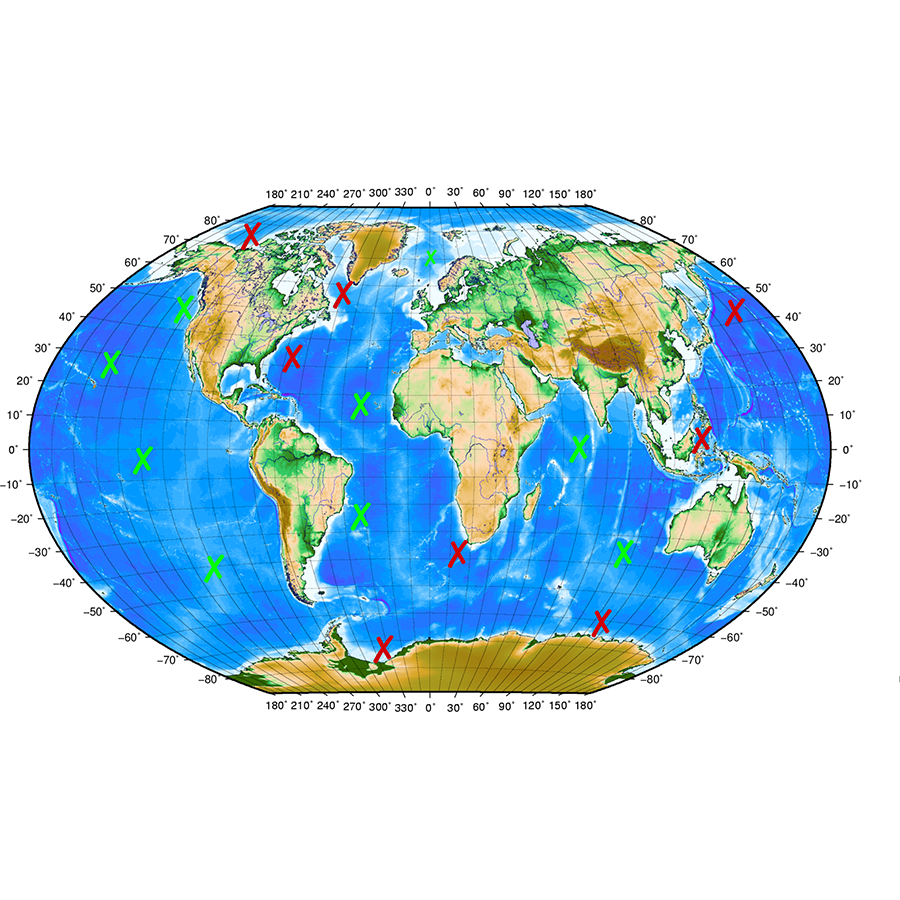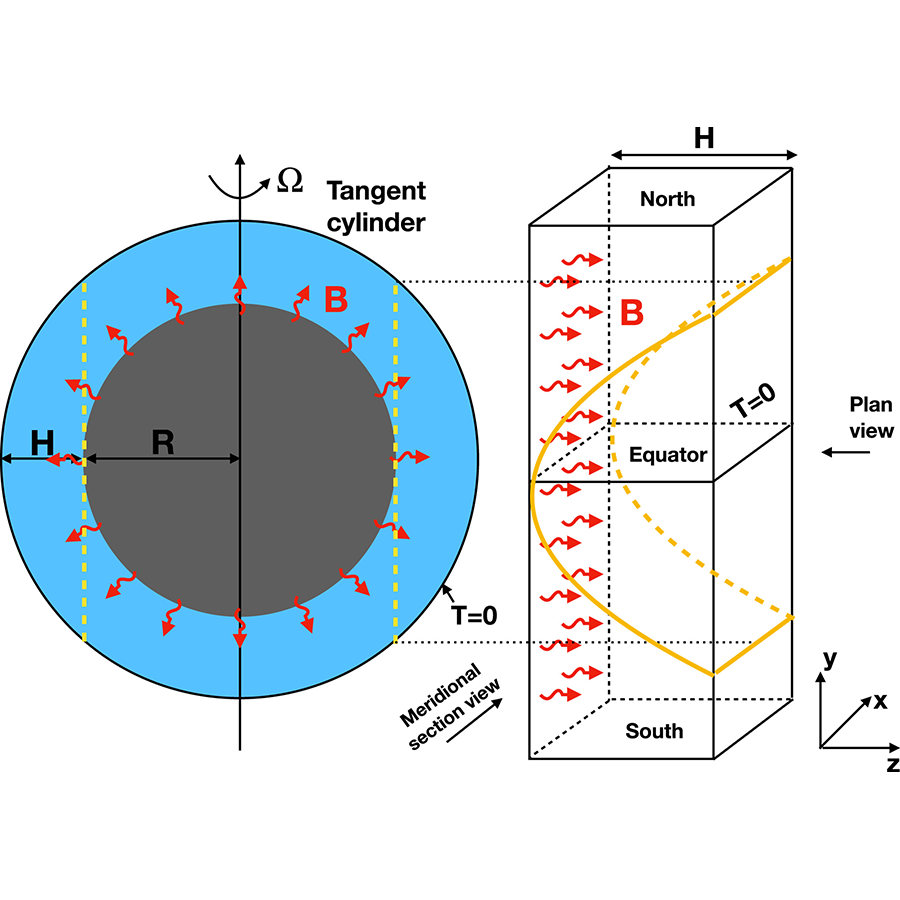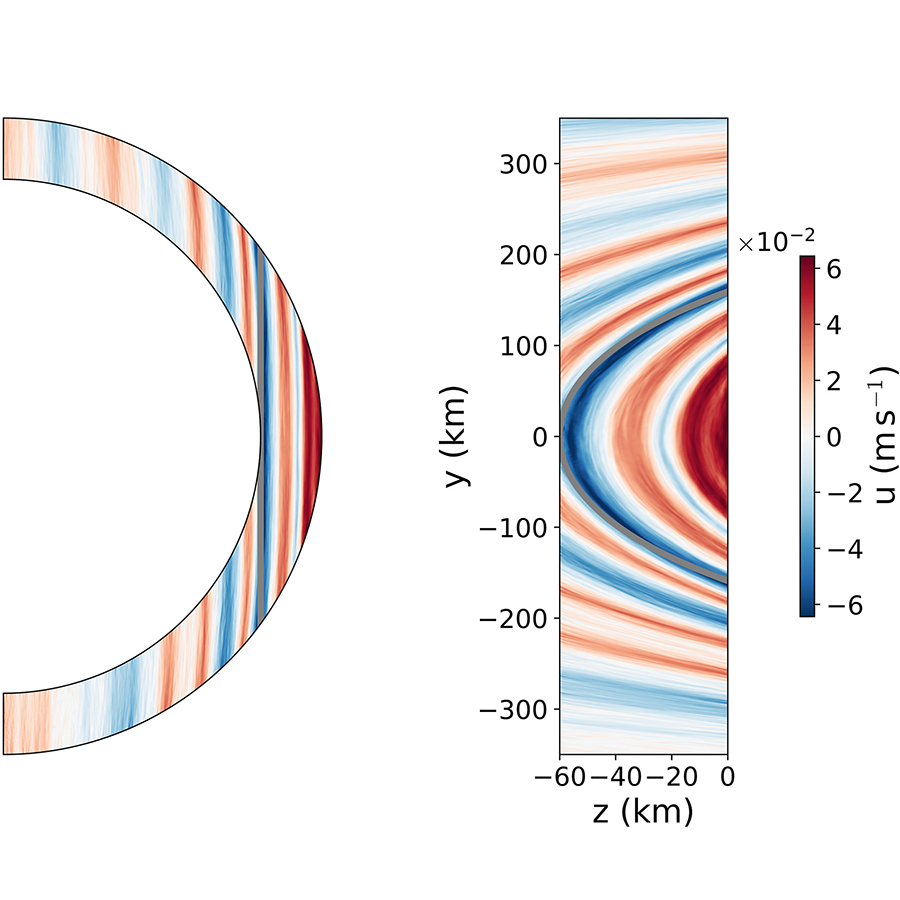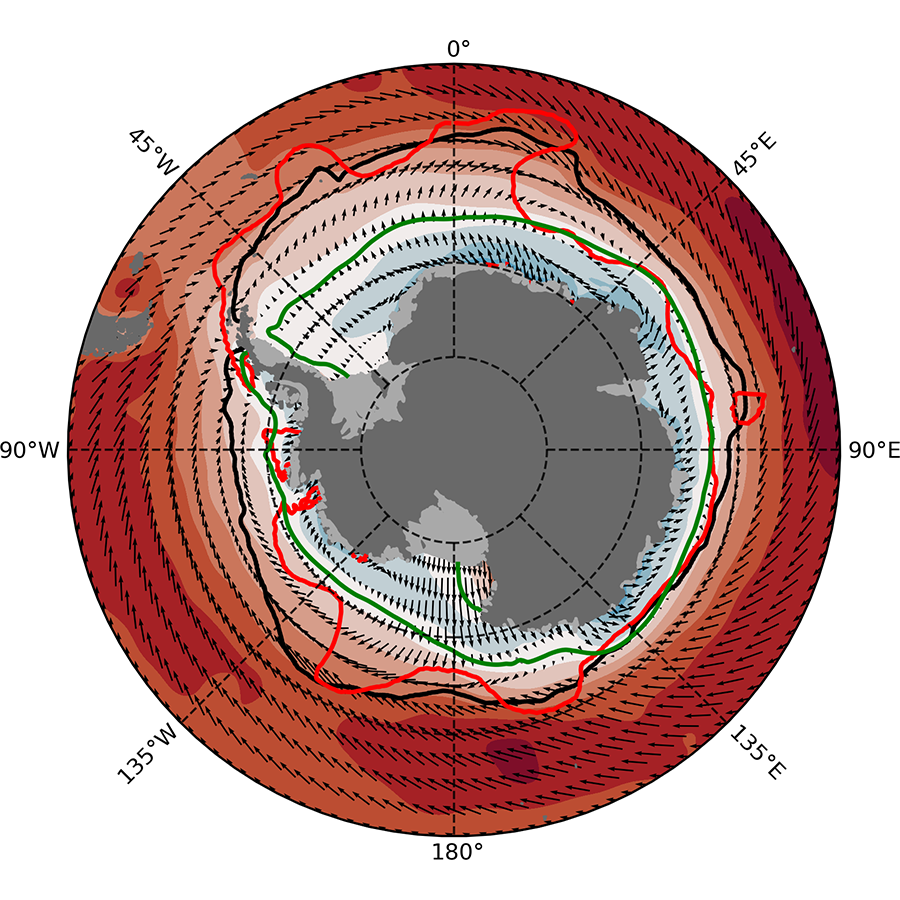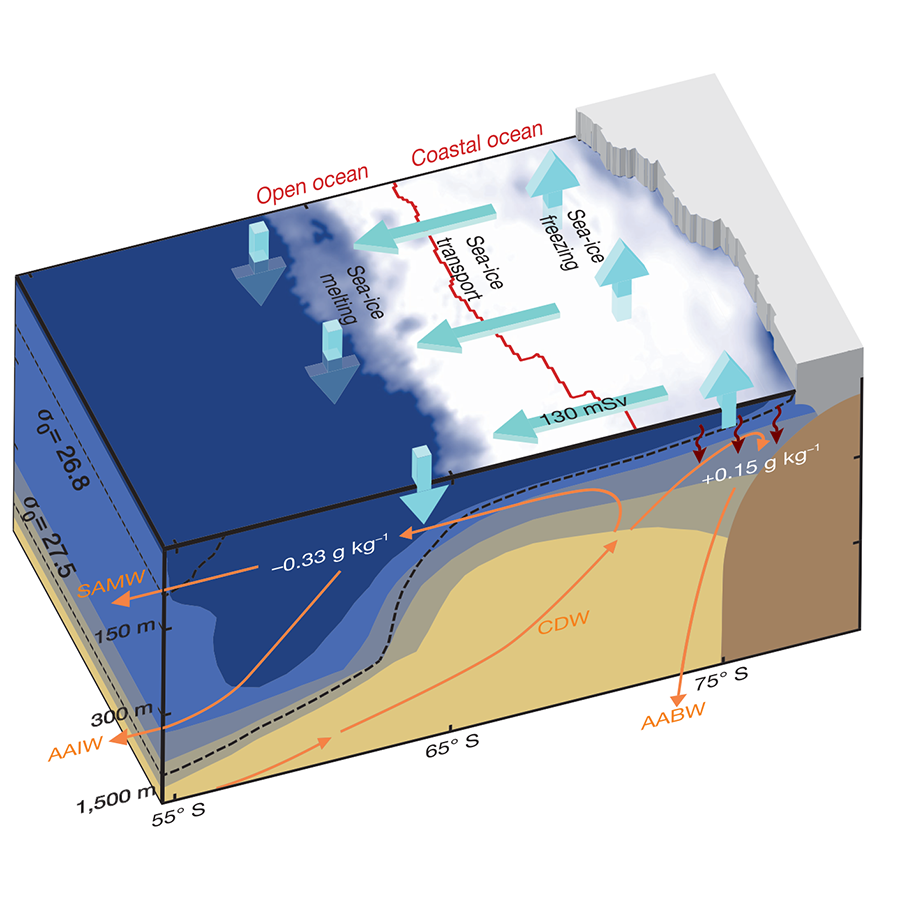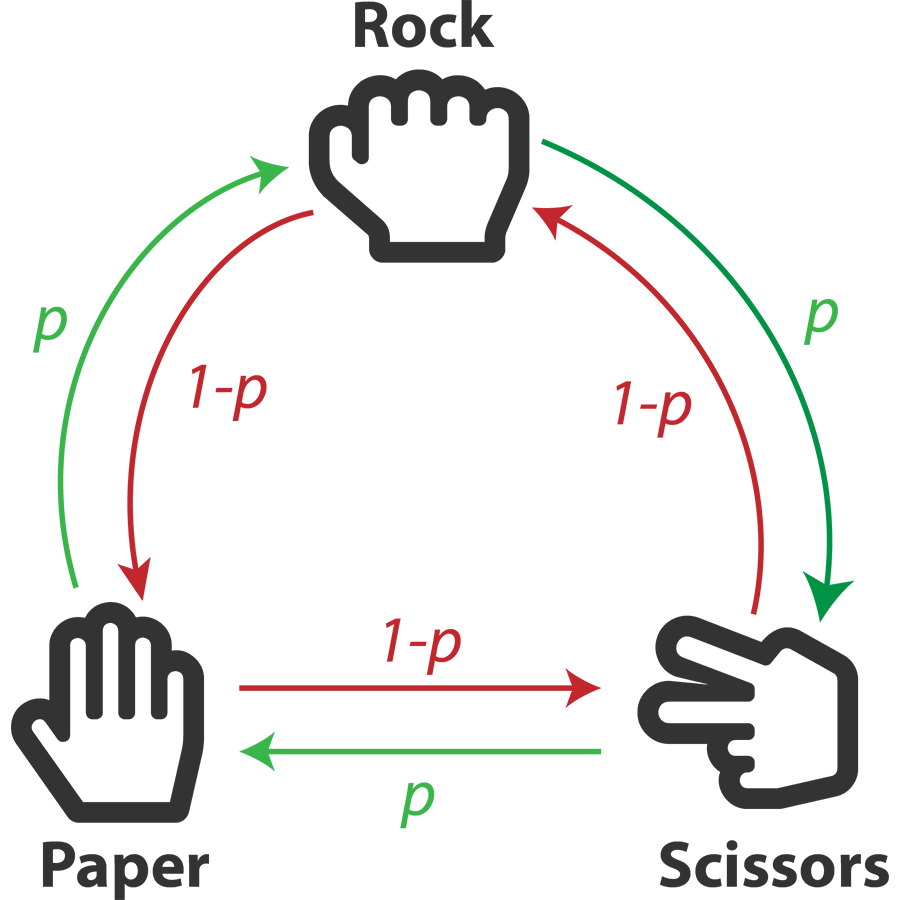I'm a Computing Scientist and Founding Engineer at atpdeth MRV where I'm building the ocean modeling and GPU computing infrastructure needed to monitor ocean-based operations and enable verifiable marine carbon dioxide removal.
Before joining atdepth I was an Applied Scientist at Afresh working on reducing food waste, a huge contributor to climate change, by using machine learning to help grocery stores optimize their inventory management and ordering decisions.
Before that I received my PhD in Computational Earth, Atmospheric, and Planetary Sciences from MIT where I worked at the intersection of climate science and scientific machine learning. As part of the Climate Modeling Alliance I developed Oceananigans.jl, a fast and flexible next-generation ocean model written in Julia that runs on GPUs, and used it to train machine learning models of geophysical turbulence and simulate all kinds of fluid dynamics.
And before that I received my MS and BS in Physics from the University of Waterloo where I used ultrashort pulse lasers and synchrotrons to make movies of molecular dynamics.
Research
Ocean model development
My work has involved developing ocean models for climate modeling. I am the original developer of Oceananigans.jl, a fast, friendly, and flexible Julia package for computational fluid dynamics on CPUs and GPUs (Ramadhan et al., 2020). Oceananigans.jl serves as the ocean component for the next-generation climate model being developed by the Climate Modeling Alliance. I led development of the first release and implemented features to turn it into a fully-fledged ocean model. I also worked on
- implementing support for GPUs with CUDA and distributed computing with MPI,
- supporting global ocean modeling on conformal cubed sphere grids,
- collaborating with researchers to accelerate research at several institutions,
- building comprehensive test suites with robust continuous integration pipelines,
- and writing extensive documentation and tutorials.
Capturing missing physics in climate models using machine learning
Even with today's immense computational resources, climate models cannot resolve every cloud in the atmosphere or eddying swirl in the ocean.
However, collectively these small-scale turbulent processes play a key role in setting Earth's climate.
The problem is that they are not well-represented in climate models.
My research combines physical principles and machine learning to improve how turbulence is represented in climate models
We take simple yet robust models of these turbulent processes and augment the partial differential equations they solve with neural networks.
The augmented models are trained using resolved simulations of the turbulent process generated using Oceananigans.jl so the neural networks learn the missing physics (Ramadhan et al., 2023).
Fluid dynamics on Earth and other planets
In collaboration with oceanographers at MIT, we have leveraged Oceananigans.jl to tackle research problems requiring the speedup provided by GPUs. For example, we have fit oceanic convection models using Bayesian inference, accurately modeled meltwater from Antarctic ice shelves, and even investigated the circulation of subsurface oceans on icy moons such as Jupiter's Europa and Saturn's Enceladus.
Southern Ocean dynamics
I have done some work on bringing in a dynamical perspective to how the Southern Ocean's meridional overturning circulation interacts with the ocean surface and sea ice around Antarctica (Ramadhan et al., 2022). This was done by inferring surface stress patterns from decades of observational satellite data. We also investigated trends that may explain patterns and rates of Antarctic land ice loss and sea level rise.
Idealized modeling of the ecological dynamics of marine microbes
Marine microbial communities lie at the bottom of the oceanic food web sustaining all marine animal life. The geographical structure of these microbial communities, and thus oceanic biodiversity, is set by short-range ecological interactions. To investigate how these interactions affect biodiversity, we utilized an agent-based modeling approach in which millions of marine microbes are modeled as particles that are advected by surface ocean currents derived from satellite observations. The interaction was modeled using an imbalanced probabilistic rock-paper-scissors game leading to the reproduction of observed ecological phenomena.
Other projects
Project Lovelace: Developing computational thinking in science students
Project Lovelace is an open online platform for learning about science and developing computational thinking through programming and problem solving. It is a collection of computational science problems and tutorials taken from all branches of the natural, social, and mathematical sciences. Each problem teaches a scientific application (e.g. locating earthquakes, DNA splicing) and requires the use of scientific insight and some programming skills to solve. Tutorials teach computational methods that students and researchers may find useful (e.g. solving differential equations, Bayesian inference) and may be required knowledge for some problems.
While Project Lovelace is still in development, we are deploying the website and the problems one by one throughout the winter in preparation for a pilot run in April 2017. In addition to the website's recreational aspect we ultimately hope that the problems and tutorials may be used in undergraduate courses, especially to complement courses that lack a computational portion as computational methods have become ubiquitous in almost every field of science.
 The name commemorates Ada
Lovelace who proposed the first algorithm to be run on a computer in the 1840's.
The name commemorates Ada
Lovelace who proposed the first algorithm to be run on a computer in the 1840's.
Molecular movies and geometry reconstruction using Coulomb explosion imaging
Have you ever seen a molecule bend or participate in a chemical reaction? If so, probably not directly: single molecules are notoriously hard to observe for any length of time. For my MSc thesis I developed a rigorous computational framework to create movies of individual molecules undergoing chemical reactions using Coulomb explosion imaging (CEI), a technique of studying the ultrafast dynamics of smaller molecules in the gas phase. While CEI has always promised that atomic structures may be measured, in practice no rigorous method is available and instead the momentum vectors are studied. The momentum vectors tell a large part of the story but aren't as satisfying to study as the actual structure everyone seeks so a method of retrieving the structure is highly desirable.
The structure may be recovered by attempting to simulate the CEI experiment backwards in time; however, solving for the molecular geometries constitutes an ill-posed nonconvex optimization problem that is difficult to tackle computationally even for small molecules. I am actively trying different optimization approaches and also collaborating with the Department of Statistics and Actuarial Science on a fully statistical approach using Bayesian inference. So far the statistical approach seems more promising as it will allow for the inclusion of measurement uncertainty which every previous study has neglected and seems to scale well to larger molecules (Ramadhan, 2017).
 Molecular movie of proton migration in acetylene imaged in momentum space (by other members of my group).
Molecular movie of proton migration in acetylene imaged in momentum space (by other members of my group).
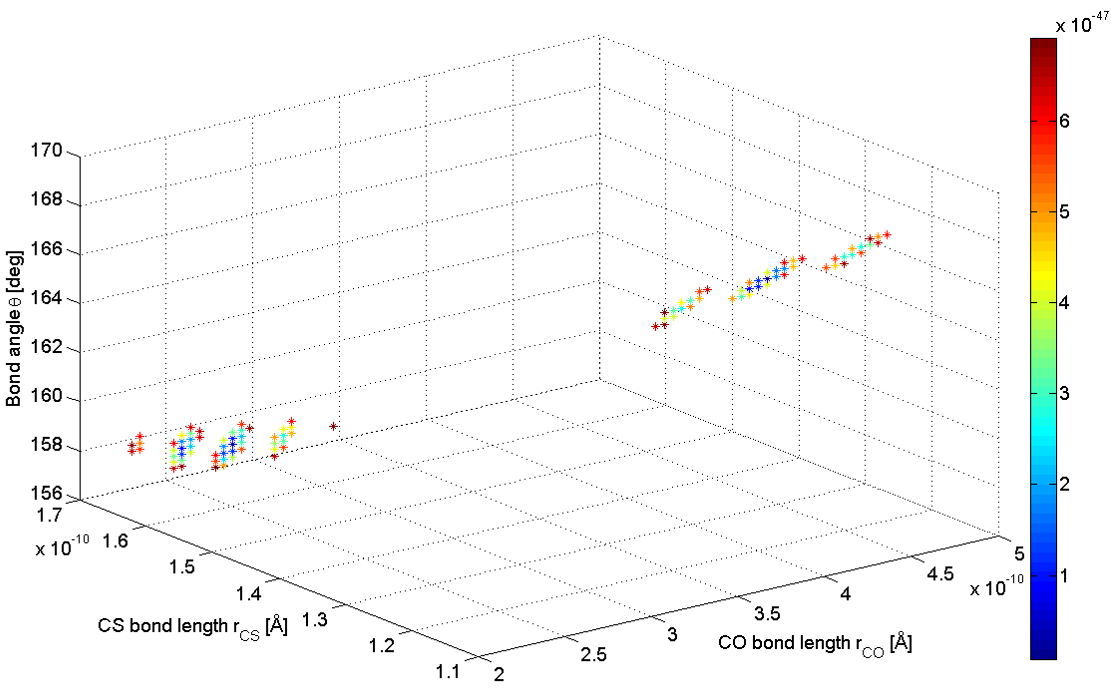 Multiple (two) structures found in searching for molecular geometries showcasing the ill-posed nature of
the optimization problem.
Multiple (two) structures found in searching for molecular geometries showcasing the ill-posed nature of
the optimization problem.
Ultrafast molecular dynamics probed by synchrotron radiation
The geometries and dynamics of small gas molecules may be studied by Coulomb explosion imaging (CEI), providing a means of directly probing the atomic structure and dynamics of smaller molecules in the gas phase, a regime where no method is viable. CEI is usually performed using ultrashort laser pulses (~10−15 s) with the goal of "blowing up" the molecule as fast as possible to minimize the disturbance to the molecule and ensure accurate imaging of the atomic structure.
As a proof of principle, we were able to use single X-ray photons from the Canadian Light Source synchrotron to study the dynamics of dissociative ionization in the OCS molecule using CEI. The use of single X-ray photons led to faster ionization and "blow up" compared to short laser pulses, showing promise for greater temporal precision in CEI experiments. It also allowed us to identify a surprisingly rich set of ultrafast molecular dynamics for the first time (Ramadhan et al., 2016).


Easy end-cap control in polyyne synthesis using ultrafast lasers
The traditional synthesis method for polyynes, an allotrope of carbon with chemical structure (−C≡C−)n, is a challenging and dangerous multistep procedure that provides little control over the their end-caps. Yet polyynes are of great interest in interstellar chemistry and especially in nanotechnology as potential elements for molecular machines and carbon cluster precursors. Their end-caps may endow them with extra functionality and so a safe and controllable synthesis procedure is highly desirable.
By irradiating different liquid solvents with short laser pulses, we are able to easily synthesize long-chain polyynes and demonstrate end-cap control for methyl caps. Using high-performance liquid chromatography (HPLC), we have confirmed the synthesis of polyynes up to C18H2 and methyl-capped polyynes up to HC14CH3. This opens the possibility for controlling the synthesis of other polyyne molecules and their efficient mass production (Ramadhan et al., 2016).

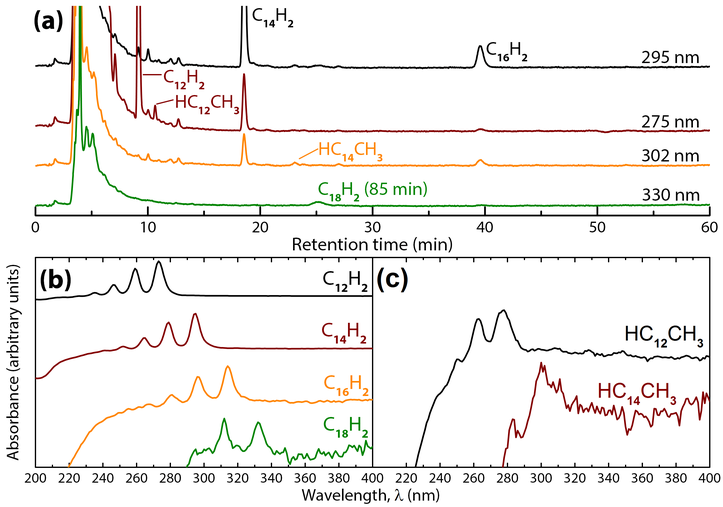
Synthesis of graphene oxide gels and thin films with tunable properties
Graphene has attracted an enormous amount of attention over the past decade owing to its peculiar properties and vast applicability. However, large-scale single layers of pristine graphene are difficult to obtain and thus much research has focused on graphene oxide gels which may be used to produce high-quality graphene. These gels have their own applications too, such as drug delivery and sensor engineering. To satisfy the large demand for graphene oxide gels, an efficient production method is highly desirable.
By irradiating aqueous graphene oxide with femtosecond laser pulses, we were able to convert the solution into a gel with physical and chemical properties comparable with those of a monolayer graphene sheet. We were also able to control the properties of the synthesized gel by simply tuning the laser pulse's properties allowing for the production of different gels suitable for building nano-sized graphene photodetectors and transistors (Ibhrahim et al., 2014).
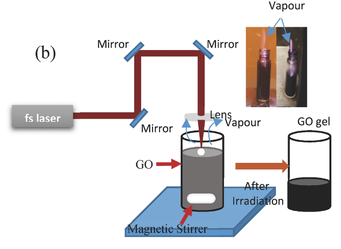
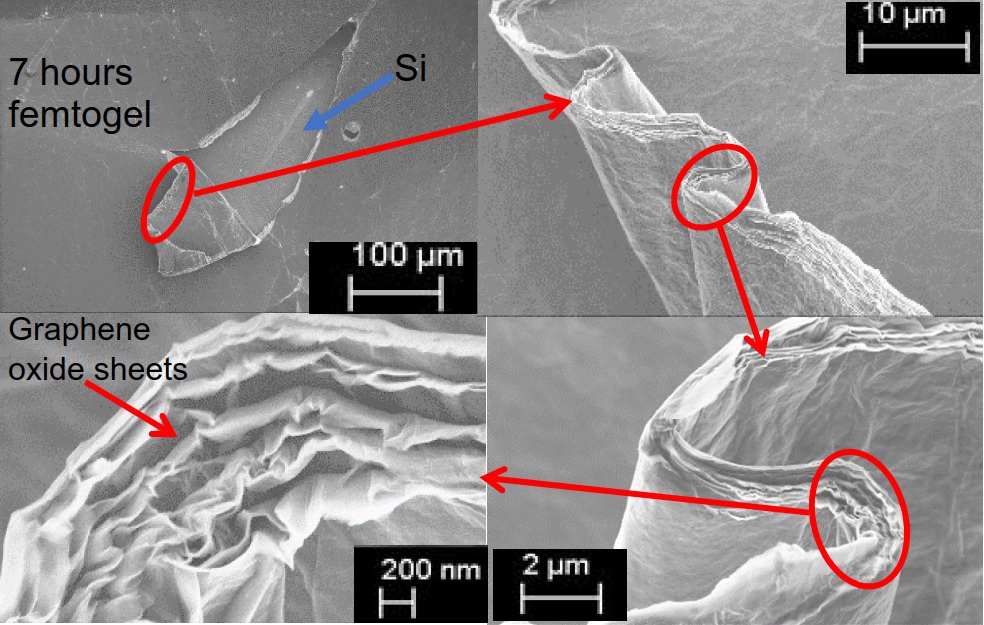
Publications
-
Capturing missing physics in climate model parameterizations using neural differential equations
A. Ramadhan, J. C. Marshall, A. N. Souza, X. K. Lee, U. Piterbarg, A. Hillier, G. L. Wagner, C. Rackauckas, C. Hill, J.-M. Campin, R. Ferrari
Submitted to Journal of Advances in Modeling Earth Systems (2023). ESSOAr pdf -
Oceananigans.jl: A model that achieves breakthrough resolution, memory and energy efficiency in global ocean simulations
S. Silvestri, G. Wagner, C. Hill, M. R. Ardakani, J. Blaschke, J.-M. Campin, V. Churavy, N. Constantinou, A. Edelman, J. Marshall, A. Ramadhan, A. Souza, R. Ferrari
arXiv:2309.06662 [physics.ao-ph] (2023). arXiv -
CATKE: a turbulent-kinetic-energy-based parameterization for ocean microturbulence with dynamic convective adjustment
G. L. Wagner, A. Hillier, N. C. Constantinou, S. Silvestri, A. Souza, K. Burns, A. Ramadhan, C. Hill, J.-M. Campin, J. Marshall, R. Ferrari
2306.13204 [physics.ao-ph] (2023). arXiv -
Divergent behavior of hydrothermal plumes in fresh versus salty icy ocean worlds
S. Bire, T. Mittal, W. Kang, A. Ramadhan, P. Tuckman, C. R. German, A. M. Thurnherr, J. C. Marshall
Submitted to Journal of Geophysical Research: Planets (2023). ESSOAr pdf -
TOI-1075 b: A Dense, Massive, Ultra-short-period Hot Super-Earth Straddling the Radius Gap
Z. Essack, A. Shporer, J. A. Burt, et al. (including A. Ramadhan)
The Astronomical Journal 165(2), 47 (2023). doi pdf -
Approaches for constraining uncertainty and degeneracy in geometry reconstruction of molecules from simulated Coulomb explosion data
A. Tian, A. Ramadhan, M. Nooijen, S. V. Pantazi, R. Karimi, J. H. Sanderson
Computer Physics Communications 297, 109074 (2023). doi -
Observations of Upwelling and Downwelling Around Antarctica Mediated by Sea Ice
A. Ramadhan, J. Marshall, G. Meneghello, L. Illari, K. Speer
Frontiers in Marine Science 9, 864808 (2022). doi pdf -
Exploring Ocean Circulation on Icy Moons Heated From Below
S. Bire, W. Kang, A. Ramadhan, J.-M. Campin, J. Marshall
Journal of Geophysical Research: Planets 127, e2021JE007025 (2022). doi pdf news -
On the Settling Depth of Meltwater Escaping from beneath Antarctic Ice Shelves
C. W. Arnscheidt, J. Marshall, P. Dutrieux, C. D. Rye, A. Ramadhan
Journal of Physical Oceanography 51(7), 2257–2270 (2021). doi pdf -
Near-Inertial Waves and Turbulence Driven by the Growth of Swell
G. L. Wagner, G. P. Chini, A. Ramadhan, B. Gallet, R. Ferrari
Journal of Physical Oceanography 51(5), 1337–1351 (2021). doi pdf -
Uncertainty Quantification of Ocean Parameterizations: Application to the K-Profile-Parameterization for Penetrative Convection
A. N. Souza, G. L. Wagner, A. Ramadhan, B. Allen, V. Churavy, J. Schloss, J. Campin, C. Hill, A. Edelman, J. Marshall, G. Flierl, R. Ferrari
Journal of Advances in Modeling Earth Systems 12, e2020MS002108 (2020). doi pdf -
Oceananigans.jl: Fast and friendly geophysical fluid dynamics on GPUs
A. Ramadhan, G. L. Wagner, C. Hill, J.-M. Campin, V. Churavy, T. Besard, A. Souza, A. Edelman, R. Ferrari, J. Marshall
Journal of Open Source Software 5(53), 2018 (2020). doi pdf -
Universal Differential Equations for Scientific Machine Learning
C. Rackauckas, Y. Ma, J. Martensen, C. Warner, K. Zubov, R. Supekar, D. Skinner, A. Ramadhan, A. Edelman
2001.04385v4 [cs.LG] (2020). arXiv pdf -
Molecular movies and geometry reconstruction using Coulomb explosion imaging
A. Ramadhan
Master's thesis, University of Waterloo (2017). uri pdf -
X-Ray Dosimetry During Low-Intensity Femtosecond Laser Ablation of Molybdenum in Ambient Conditions
M. J. Wesolowski, C. C. Scott, B. Wales, A. Ramadhan, S. Al-Tuairqi, S. N. Wanasundara, K. S. Karim, J. H. Sanderson, C. A. Wesolowski, P. S. Babyn
IEEE Transactions on Nuclear Science 64, 2519–2522 (2017). doi pdf -
Synthesis of hydrogen- and methyl-capped long-chain polyynes by intense ultrashort laser pulse irradiation of toluene
A. Ramadhan, M. Wesolowski, T. Wakabayashi, H. Shiromaru, T. Fujino, T. Kodama, W. Duley, J. Sanderson
Carbon 118, 680–685 (2017). doi pdf -
Ultrafast molecular dynamics of dissociative ionization in OCS probed by soft X-ray synchrotron radiation
A. Ramadhan, B. Wales, I. Gauthier, R. Karimi, M. MacDonald, L. Zuin, J. Sanderson
Journal of Physics B: Atomic, Molecular, and Optical Physics 49, 215602 (2016). doi pdf -
A Novel Femtosecond Laser-Assisted Method for the Synthesis of Reduced Graphene Oxide Gels and Thin Films with Tunable Properties
K. Ibrahim, M. Irannejad, M. Hajialamdari, A. Ramadhan, K. Musselman, J. Sanderson, M. Yavuz
Advanced Materials Interfaces 3, 1500864 (2016). doi pdf -
Ultrafast Light Interaction with Graphene Oxide Aqueous Solution
K. Ibrahim, M. Irannejad, A. Ramadhan, W. Alayak, J. Sanderson, B. Cui, A. Brzezinski, M. Yavuz
Proceedings of the 14th IEEE International Conference on Nanotechnology 830–831 (2014). doi pdf -
Welding of Au Microwires by Femtosecond Laser Irradiation
N. Ly, M. Mayer, A. Ramadhan, J. Sanderson
Proceedings of the 14th IEEE International Conference on Nanotechnology 146–149 (2014). doi pdf -
Coulomb imaging of the concerted and stepwise break up processes of OCS ions in intense femtosecond laser radiation
B. Wales, É. Bisson, R. Karimi, S. Beaulieu, A. Ramadhan, M. Giguère, Z. Long, W. Liu, J. Kieffer, F. Légaré, J. Sanderson
Journal of Electron Spectroscopy and Related Phenomena 195, 332–336 (2014). doi pdf
Resources
Climate and weather
- Oceananigans.jl: Julia software for fast, friendly, flexible, ocean-flavored fluid dynamics on CPUs and GPUs.
- Fluid dynamics with Oceananigans.jl: 10-minute YouTube introduction I gave as part of MIT's Introduction to Computational Thinking course in Fall 2020.
- Mathematical diseases in climate models and how to cure them: A talk I gave at the 36th Chaos Communication Congress (CCC) in Leipzig, Germany.
- NeuralFreeConvection.jl: Capturing missing physics in climate model parameterizations using neural differential equations.
- Atmosfoolery.jl: A proof-of-concept compressible non-hydrostatic atmospheric model dynamical core built on top of Oceananigans.jl so it runs on CPUs and GPUs, with several tests/validation experiments.
- wxConch: Generate a bias-corrected prediction gathered from multiple weather models in an attempt to outperform them at short-term weather prediction for a particular station.
- Lagrangian microbes: A framework for simulating millions of interacting Lagrangian particles (or microbes!) in a turbulent ocean. You can watch the dynamics on YouTube or read a report for the details.
- Variational inference for Dirchlet process mixtures: Slides from a lecture I presented with Mikołaj Kasprzak as part of MIT's Bayesian Modeling and Inference course in Spring 2022.
- Gaussian processes for machine learning: Lecture notes written with Rahul Kasar as part of MIT's Bayesian Modeling and Inference course in Spring 2022.
- Quantifying climate feedbacks using radiative kernels: Slides summarizing the methodology proposed by Soden et al. (2008) for quantifying climate feedbacks based on "radiative kernels".
Physics
- Jaynes-Cummings Model: Slides introducing the Jaynes-Cummings model in quantum optics, with a step-by-step derivation.
- Quantum coin toss: A "practice" proposal, report, and presentation detailing how you would perform a quantum coin toss using an actual coin!
- The energy gap in nuclear matter: An article discussing the energy gap (~1 MeV) between even-even and odd nuclei with a crude but lengthy derivation of an equation to estimate the energy gap.
- Erbium doped fiber amplifiers: A short article explaining why erbium doped fiber amplifiers are used in fiber optic communications.
- Review of a paper on ultrafast optical transistors: A critical review of a paper that appeared in Optics Letters detailing the capabilities of a new ultrafast optical transistor.
- Review of a paper on nitrogen-vacancy centers in an optical cavity: A critical review of a paper that appeared in Nature Photonics reporting on the resonant enhancement of the zero-phonon emission from nitrogen-vacancy centers in a single-crystal diamond microring cavity.
Code
- Project Lovelace: Code for projectlovelace.net. A website with scientific programming problems with automatic judging of submissions.
- DocumenterCitations.jl: Add BibTeX citations and bibliographies to documentation for your Julia packages.
- Micrograd.jl: A Julia implementation of Andrej Karpathy's micrograd, a tiny automatic differentiation package built from scratch.
- Plotting location history using Python and Cartopy: Produce pretty maps of where you've been using location history data. Great for visualizing motorcycle road trips.
Misc.
- Project Lovelace on Hacker News
- Configuration file for beets: If you're also picky enough about tagging your music files to use beets.
- Moe music tagging plugins: Some music tagging plugins for Moe, a more modern and flexible alternative to beets.


